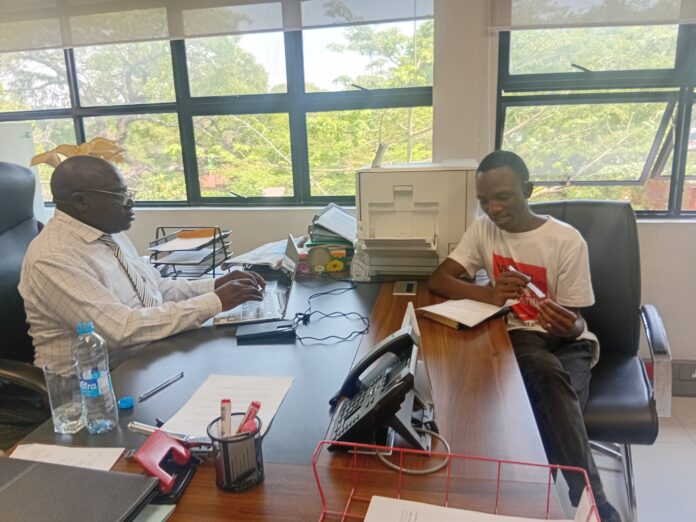For years, long queues snaked through public university campuses each time Higher Education Loans and Scholarships Board (HELSB) opened its doors for loan applications and screenings.
Students who are desperate and in need for financial support, would often spend hours sometimes entire days under the scorching sun and crowded halls patiently waiting for their turn.
“It was frustrating, you could miss a lecture or even an exam deepending on the university calender just because you had to be physically screened,” recalls,Samson Mbewe, a Third-year Student at the University of Zambia(UNZA).
Since the introduction of the student loan scheme in 2016, this chaotic scene had become a familiar routine as Thousands of applicants had to be attended to manually, leading to congestion, delays and sometimes academic disruptions.
But now, a new dawn is breaking as HELSB Chief Executive Officer, Doctor. John Machayi has announced a groundbreaking digital transformation aimed at putting an end to the long queues and inefficiencies.
“Since January, our major milestone has been the digital transformation of our operations.Previously, we received physical applications in large boxes, but we now have a fully functional online application system,” says Dr. Machayi.
The new online platform allows students to apply for and be screened for government sponsored loans from anywhere, eliminating the need for physical appearances.
He explains that both the shortlisting and award processes are now conducted internally through the digital system, marking a historic departure from the traditional manual methods.
“The online screening has been another major step forward, as it will reduce both time and costs associated with physical screening,” he notes.
“The new online process is being implemented to eliminate long queues and unnecessary delays that affect learning time.”
This move is more than just a technological upgrade, it is a relief for thousands of students whose academic performance had been disrupted by outdated administrative systems.
However, as with any new system, the transition has not been without its hiccups. Dr. Machayi acknowledges that the shift has come with some technical challenges, but he remains hopeful.
“Every shift in the way we operate comes with a few initial challenges, but through teamwork, we have managed to overcome most of them,” he says.
“Our Information Technology department is working closely with Corporate Affairs and Customer Service to ensure the process runs smoothly and efficiently.”
Dr. Mzchayi adds that the digital shift has not only improved efficiency but also led to cost savings, enabling HELSB to extend financial support to more students than before.
As HELSB continues to refine its online system, students across Zambia can finally look forward to a more seamless and accessible loan application process one that prioritizes their time, studies and future.
From standing in long, exhausting queues to simply clicking “Submit” on a digital platform, this transformation marks a new era in higher education financing that truly reflects the country’s journey toward modernisation and student centered service delivery.
The Copperbelt University Students Union(COBUSU) President, Loyd Nsonga has describes the newly introduced online digital system for student loan applications and screening by Higher Education Loans and Scholarships Board (HELSB) as profound and progressive.
Mr. Nsonga says the shift from physical to digital online screening would allow students to avoid spending several days in long queues for screening, noting that many delays occur when the process is conducted physically.
Mr. Nsonga added that with the introduction of the online or digital screening system, students now have the convenience of completing the process in their own space and time, instead of enduring long and frustrating queues.
“This development is especially important for higher learning institutions such as the Copperbelt University (CBU) and the University of Zambia (UNZA), which have some of the largest student populations,” he stated.
“Continuing with physical screening would make the process difficult and tedious for students to complete all the procedures prescribed by HELSB in order to qualify for bursaries.”
Mr. Nsonga, however, said the online system may come with a few challenges, particularly the lack of face to face interaction, as some students may find it difficult to seek clarification in person about certain procedures.
“However, with time, we will adapt to this newly introduced system, which is indeed a step in the right direction. As a nation, we are embracing the digital era and becoming more aligned with technological advancements,” he said.
“We can only grow as a nation if we respect and utilize digital platforms and take an active interest in using the technology provided.”
Mr. Nsonga urged HELSB to increase sensitization among students on how to navigate the online system in order to minimize errors during the screening process.
“Overall, we are very delighted and encouraged by this improvement. Students will now spend less time in queues and more time attending classes. That, in itself, is a great achievement,” he emphasised.

